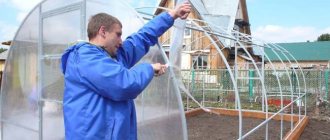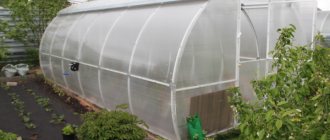Greenhouse / Soil
Primer for roses: composition and application
Soil for roses is a special composition that contains microelements and components that best provide the seedling with conditions that affect development and growth. Additional fertilizers and soils can currently be purchased at flower shops. But let’s take a closer look at how to choose them correctly.
- 1 Elements included in the composition 1.1 Composition
- 2.1 First method: replant the finished plant
- 4.1 Tips for planting roses at home
How to plant a rose in a pot
A rose at home will not grow into the same chic bush as in the fresh air, but if you create the right conditions, it will be able to decorate your apartment for a long time.
Soon after purchase, a transplant is required because:
- the composition of the soil in which the flower is sold in the store is selected in such a way that there are enough nutrients for the rose to look impressive at the time of purchase, but is not suitable for its long-term maintenance;
- The size of the pot is not enough to provide room for the roots to grow, and the earthen ball does not dry out quickly.
Careful transplantation of roses using the transshipment method is possible at any time of the year, but it is better to do this in early spring or late summer. It is not advisable to transplant while the rose is blooming. You need to wait until the flowers begin to wilt, then trim them, new buds and dried leaves, and wash the bush with soapy water and then with clean warm water. Instead of soap, you can use a solution of phytosporin. With this treatment, possible pests remaining on the plant and not noticed by the owner upon purchase are removed.
It is advisable that from the moment of purchase until replanting the pot is in the place where it will remain in the future. After all, it won’t be easy for a transplanted rose anyway; it will “sick” and adapt for a long time, up to a month and a half, so it should be accustomed to a new place right away.
Is pruning necessary?
Pruning roses is a necessary step for almost all hybrid ornamental varieties (there are exceptions). There are several seasons for active pruning:
- Before winter, the bush is pruned almost completely. Only up to 5 buds remain on each shoot. Leaves and buds are shed.
- In early spring it is allowed to form the crown. To do this, wilted shoots and dry leaves are removed.
- in summer . Mainly for decorative purposes. All drying parts are removed, as well as faded buds.
If you do the pruning correctly, the rose bush will always evoke only positive emotions and grow correctly and aesthetically.
What kind of pot is needed for an indoor rose?
You need to replant a rose bought in a store into a pot of a suitable size. It should be 2-3 cm in diameter and 4-5 cm higher than the previous one. If the flower was bought in a pot that is too small, these numbers will have to be increased: at least 2 cm is needed between the tips of the roots and the walls of the new vessel. It is better to take a tall pot than a wide one. There is no need to try to plant an indoor rose in a container the size of a bucket or tub: at home it is still impossible to grow a large bush, and the excess soil will turn sour. In too large pots, the rose on the windowsill blooms sparingly.
The best material is unpainted clay; drainage holes in the bottom are required. Before transplanting, a purchased new pot is soaked in water for 2-3 hours, and a used one is thoroughly washed without using detergents. A drainage layer of 2-3 cm is placed at the bottom: small pebbles, clay shards, expanded clay, etc. This material should be disinfected by holding it for half an hour in a pink solution of potassium permanganate.
Conclusion
On the one hand, it may seem that opinions about indoor roses are completely true - caring for the plant is difficult, it reacts to the slightest unfavorable factors.
However, another opinion is also relevant. If you follow the necessary care conditions (and although there are many of them, they are doable), then a decorative rose will absolutely become a worthy decoration for a flower lover’s garden or room; it will bloom for a long time, abundantly and with high quality, delight the eye and bring pride in the work done every year.
Soil preparation
Unlike many indoor plants that prefer neutral soils, roses prefer slightly acidic soils. However, this plant is quite capricious, and it is not easy to create a suitable nutritional mixture on your own: it is better to immediately buy it in the store. The soil purchased from a reliable manufacturer will have the necessary reaction of the environment, and will also be enriched with all the necessary microelements. The latter is especially difficult to achieve at home. It is better to disinfect the purchased soil: to do this, just pour boiling water on it.
If you couldn’t buy soil for roses, you can make it yourself. Suitable turf soil, humus and clean river sand in a ratio of 4:4:1. It is necessary to disinfect such a mixture: it is better to use, as for drainage material, a pink solution of potassium permanganate. The plant is planted in moist soil.
Common mistakes
Knowing that roses are very demanding to care for, it is logical to assume that there may be plenty of mistakes when growing them. However, some of them are the most common:
- Wrong location (a place that is too sunny or too dark will not work).
- Suboptimal irrigation tactics (it is necessary to monitor the condition of the soil, and not develop a standard frequency).
- Lack of fertilizing (roses spend a lot of energy on flowering).
- No pruning (the bush will become ugly and will bloom less).
- Enhanced treatment against pests and diseases, mistakenly assuming that since the plant does not bear fruit, it can be poisoned more abundantly.
Preparing the root system
Even a cutting of a rose taken from a bouquet can be planted in soil prepared according to the rules. If greenhouse conditions are created, it may well take root, although success is not 100% guaranteed. A full-fledged bush will definitely take root in it.
What does “full” mean? It happens that a rose sold in a store is planted in such soil that its composition is not intended to preserve the vitality of the plant for a long time. This is usually noticeable by the appearance of the roots. There is no guarantee that a plant with very thin, almost black roots will take root in the new pot. It is in this case that it will be safer to cut cuttings and try to root them.
If the damage to the roots is minor (it often happens that they are slightly rotten), such areas are cut off with pruners or scissors. Before transplanting, many gardeners treat the root system with solutions of root formation stimulants, but this makes sense if all the old soil has to be removed (for example, a rose for sale is planted not in soil, but in peat). If it is clear that the roots are healthy and the soil is good (however, only an experienced gardener can evaluate the latter), it is better to replant the flower using the transshipment method.
It happens that the root system, on the contrary, is so powerfully developed that the roots are twisted together. In this case, you need to separate them and give them freedom. They often sell several plants in one pot. Of course, when transplanting, each of them should be provided with a separate container.
If you had to get rid of the old soil, then when replanting:
- Pour the nutrient mixture into the pot over the drainage, make a hole of such a size that the roots can easily fit in it.
- Place the plant in the hole, gradually add fresh soil, shaking it periodically so that the air voids are filled. In this case, the planting depth should be the same as in the old pot. There is no need to compact the soil too much.
- Water the rose with water at room temperature.
- Cover the bush with a plastic bag and place the pot in partial shade.
Keep the rose under the bag for a week or a week and a half, ventilating it daily and, if necessary, spraying the soil with water. At the same time, it is worth irrigating the leaves, but you should put the bag on only after they have dried.
If the transplant is performed with a clod of earth (transshipment method), then the process is even simpler. Place the plant in a new pot with a small layer of soil and add new soil on all sides, slightly compacting it. After watering, you don’t even have to cover the bush with a bag, but it’s better to place the pot in partial shade for 3-4 days.
Read how to help a rose after winter.
Reproduction
Roses are propagated by cuttings. To do this, select a completely lignified section of the stem with buds, of which there must be at least four. The branches are cut to about 15 cm and placed in water. You can add a growth stimulator, which is sold in flower shops. Experts recommend an infusion of willow branches: pour boiling water over finely chopped stems and leave for a day. Next, they are used to germinate rose cuttings.
Yeast is a good stimulant. The cuttings are soaked in yeast water for a day - 1 liter of water and 100 g of yeast - after which they are placed in clean water.
Honey water protects the cuttings from rotting and provides all the necessary microelements for successful rooting of the rose.
How to care for a rose after transplantation
A rose in an apartment feels best in a well-lit place: it is better to give it a south-eastern window sill. The scorching rays of the sun falling from the south can destroy the plant.
After adaptation to the new pot, you should try to create the following conditions for the plant:
- The optimal temperature in spring and summer is normal room temperature (20...25 °C). In winter it will have to be lowered to 12...14 °C, and if possible to 10 °C, which is the biggest problem.
- Air humidity during the active growing season is 60-70%. In case of dry air, it is necessary to use a humidifier and spray the leaves with a spray bottle almost every day.
- Soil moisture is moderate. Watering is carried out at the root, only when the top layer of soil dries. In autumn-winter, watering is required even less frequently. The water is settled, at room temperature.
- Fertilizing is carried out with both mineral and organic fertilizers, but not in the first month after transplantation. In the spring, nitrogen is added weekly in the form of urea, saltpeter or infusion of bird droppings, in the summer (1-2 times a month) - phosphorus-potassium fertilizers. No fertilizing is required in autumn and winter.
Before wintering, remove dry leaves, shorten the shoots, leaving no more than 6 buds on them. Send the pot to a cool place. If the rose is intended to be kept indoors for many years, replanting is carried out annually or once every two years.
What should be the frequency?
Usually, after transplantation or when changing their habitat, roses require feeding no earlier than a month later. The flower must adapt to the new environment. After this, the indoor rose should be fed every two weeks.
You can perform root and foliar feeding of roses:
- root feeding consists of watering with mineral fertilizer or mullein solution;
- foliar - this is spraying the leaves of the plant with weak solutions of fertilizers.
Useful tips and nuances
A healthy plant can easily be transplanted and, with proper care, can live for a long time at home.
Experienced gardeners have no problems, but beginners should remember, for example, the following:
- Transplantation is possible at any time of the year, but the rose should not bloom. As a last resort, flowers and buds should be carefully removed and then wait at least a week. The optimal time for transplantation is early spring or late summer.
- If the plant looks healthy, its roots protruding from the clod of earth are light brown and not rotten, it is better to replant the rose using the transshipment method. In any other case, get rid of the old soil. But a flower transplanted with bare roots suffers longer; it is kept in partial shade for up to two weeks.
- Admirers of the Lunar calendar advise planning a transplant during the waxing Moon phase.
- If the room is too hot, you can take the pot out onto the balcony in spring and summer.
- Watering with cold water is unacceptable. The optimal time for watering is morning or evening.
- Feeding should not be carried out in cold weather: it is better to plan it on sunny days.
- Roses need fresh air, but strong drafts are harmful when ventilating.
Owners of summer cottages are better off transplanting roses to a flowerbed: there they feel much better than at home, and the owner does not have to rack his brains about how to provide the flower with a low air temperature in winter.
Among indoor flowers, the rose occupies a special place: after all, it is mainly intended for the garden. However, if desired, it can also be grown on a windowsill, transplanted into a suitable pot in a timely manner and according to the rules.
Different varieties (We make a short overview of the most popular varieties)
Varieties of decorative roses can differ greatly from each other. Moreover, this concerns not only the appearance, the height of the bush, the abundance of greenery, but also such an important factor as aroma. It can be rich or barely noticeable.
- “Angela Ripon” is an almost classic rose with soft pink flowers, but smaller in size than garden varieties (flowers up to 4 cm in diameter). When flowering, the variety emits fragrant, persistent aromas. The bushes grow up to 35 cm and do not require pruning when caring.
- ' Yellow Doll ' is one of the oldest hybrids and has a distinct scent when flowering and the bush produces many flowers with a pale yellow tint. The variety has earned popularity due to the abundance of petals in the bud (up to 50 on each flower).
- " Green Ice " . This variety produces white flowers with a clearly visible green tint. The flowers do not smell strongly, but the most important features of the variety are tall bushes of regular shape (up to 60 cm), extreme resistance to diseases.
Mineral fertilizers
To compensate for the deficiency of macro- and microelements, industrially produced mineral fertilizers are used. Among them are urea, Agricola, potassium sulfate. Use these products strictly according to the instructions.
Complex mineral fertilizers are good because they contain several essential elements in balanced proportions.
On sale you can find special fertilizers for indoor roses - “Joy”, “Dobrotsvet”, “Florovit”. They are designed for garden and indoor roses. All substances are in proportions corresponding to the needs of the “queen of flowers”.











